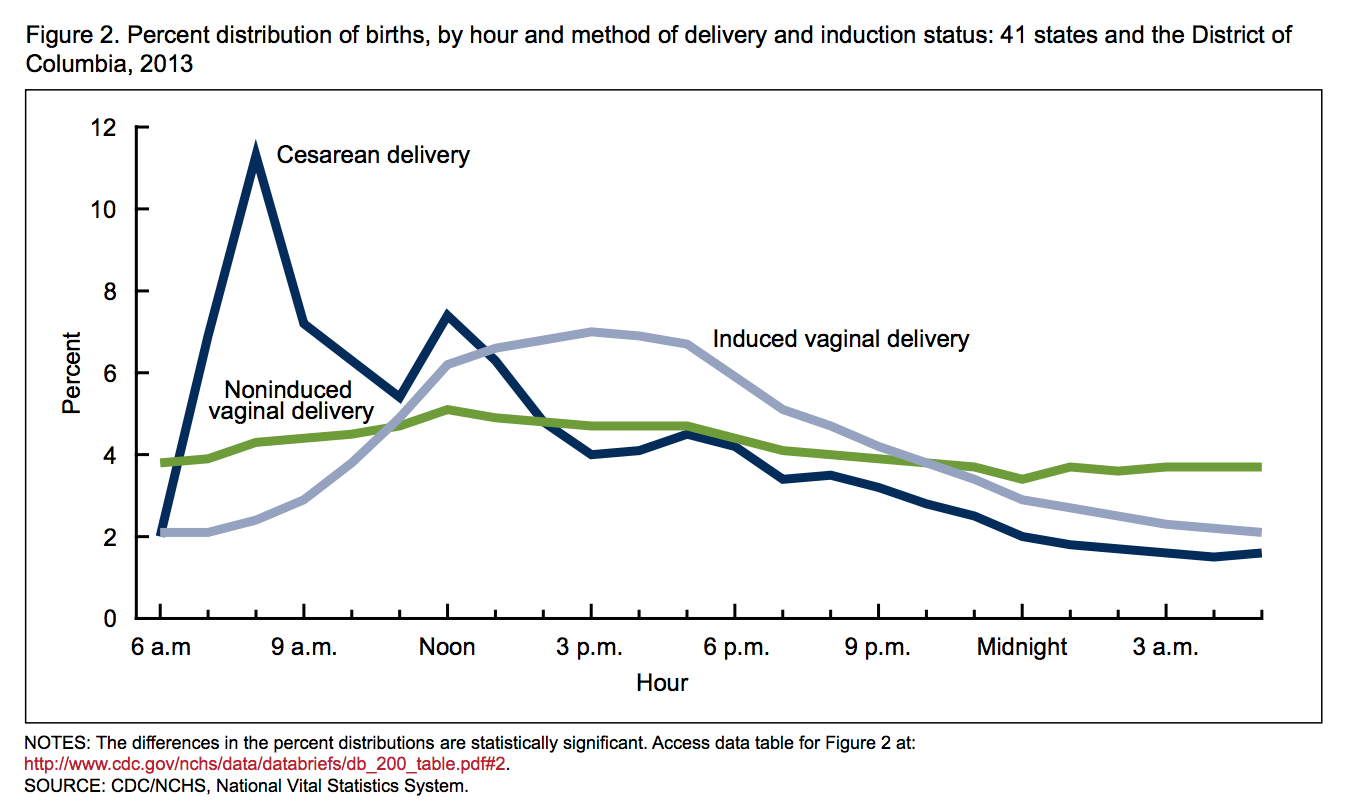Delivering a baby is a bit like a fair lottery: The chances of it happening in any given hour, on any day of the week, are pretty even. But American babies now are most likely to be born between 8 a.m. and 6 p.m., Monday through Friday, according to a new analysis from the United States’ National Center for Health Statistics. Why? Induced vaginal deliveries and Caesarian deliveries, of course.
Below is a graph showing the percent of babies that were born at different hours of 2013. Note the fairly flat green line, for non-induced vaginal deliveries, compared to the distinctive shapes of the lines for C-sections and induced vaginal deliveries, the likelihood for both of which decline after 6 p.m.

Yes, this means doctors are scheduling procedures for regular work hours, to their convenience. This is not so surprising, nor is it necessarily a bad thing. Several—though not all—studies have found that infants born outside of normal working hours have a slightly higher risk for problems at birth, perhaps because fewer hospital personnel are around at those times. Varying levels of care throughout the day is certainly a problem hospitals should fix, but meanwhile, it makes sense that more babies are born when more people are at the hospital to take care of them.
It makes sense that more babies should be born when more people are at the hospital to take care of them.
Among certain folks in the U.S., there’s an increasing reverence for “all-natural” births. Timed deliveries can seem like the opposite, but as long as birthing procedures are desired and medically justified, why not perform them at hours when hospitals are fully staffed, and that allow doctors and nurses to work more regular hours and spend more time with their own families?
Here’s another fun factoid that came out of the National Center for Health Statistics’ analysis: The most popular times for scheduled C-sections seem to be 8 a.m. and 12 p.m. C-sections that occur after the mother has tried laboring for a time are more likely to occur in the evening, night, and early morning.
The data for this analysis came from birth certificates from 41 states and Washington, D.C., representing 90 percent of the births that occurred in 2013. The analysis was made possible by a 2003 law mandating that birth certificates record the time, down to the minute, that American babies are born.
Quick Studies is an award-winning series that sheds light on new research and discoveries that change the way we look at the world.





